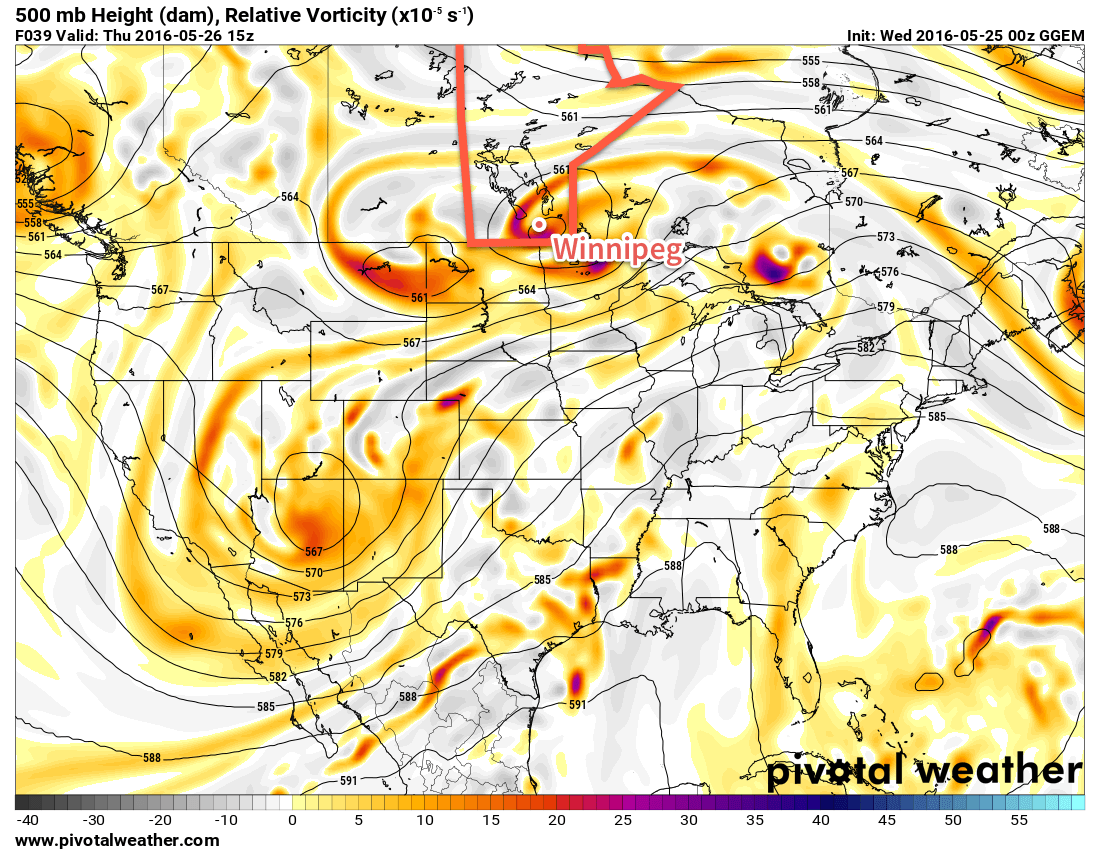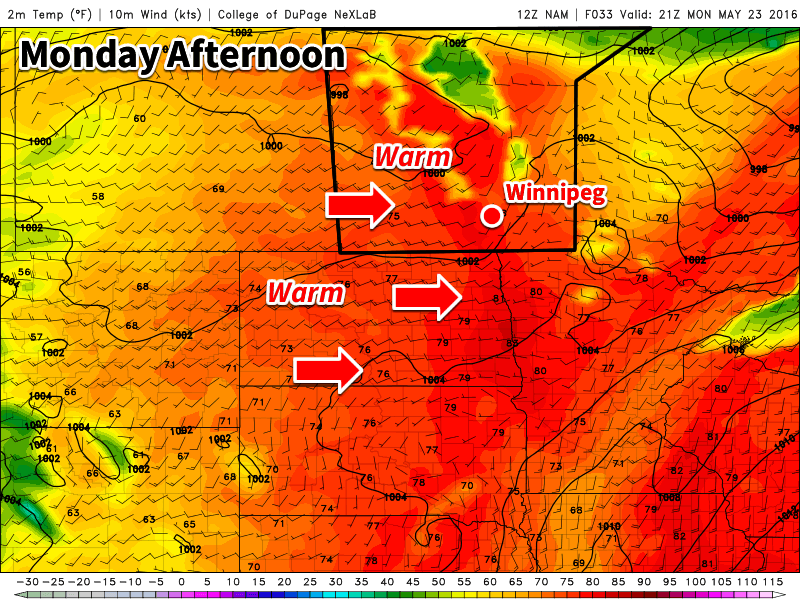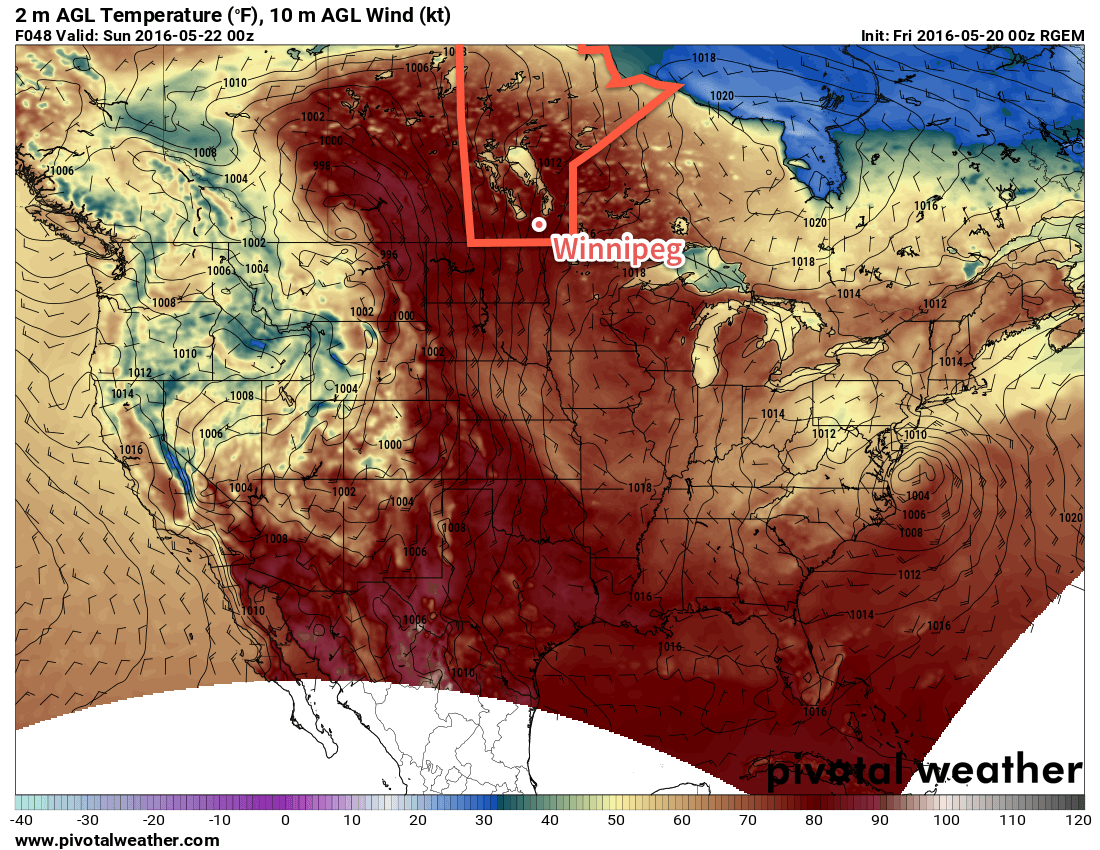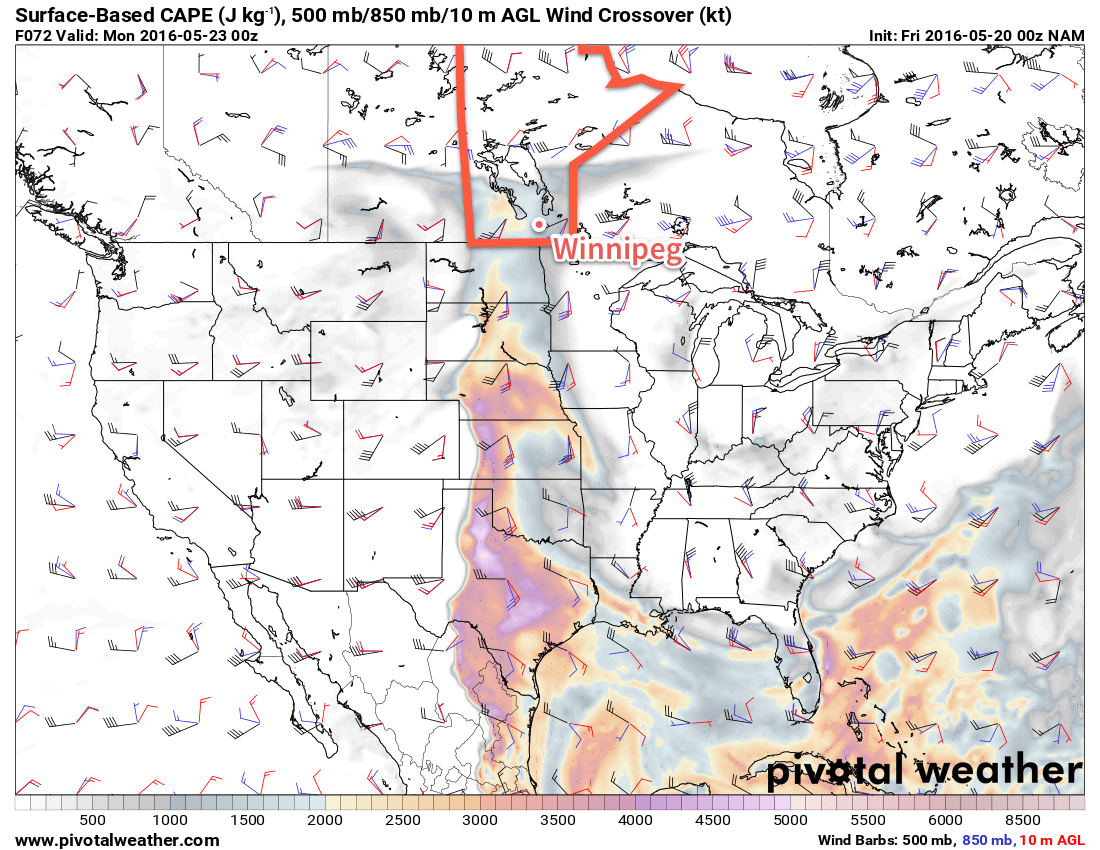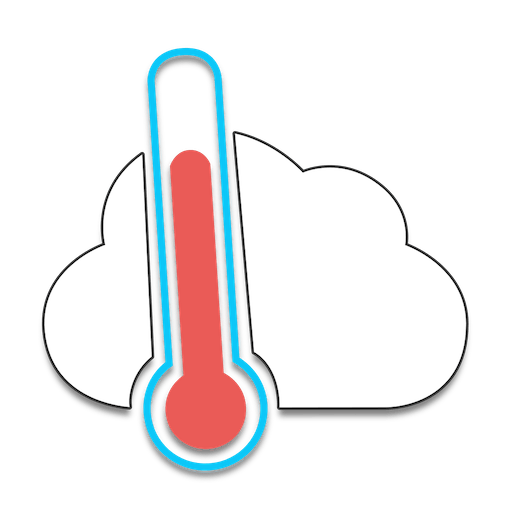More rain is on the way to Southern Manitoba this week thanks to the development of a significant low pressure system through Saskatchewan & North Dakota, but we should squeeze in one more day of nice weather before it arrives.
This Week
Today will be the last decent day before another unsettled pattern builds in as temperatures reach the mid twenties under mainly sunny skies. We’ll be located north of a sharp warm front, causing our winds to be gusty out of the north-east through the day. Cloud cover will likely begin to roll in late in the afternoon or evening, signalling the end of the nice weather. Overnight rain and thunderstorms from North Dakota will lift into southern Manitoba, ushering in more unsettled weather for the next couple days. Overnight rainfall amounts will be difficult to pin down, but 5-15 mm seems probable in most areas, with locally higher amounts in the more intense cells.
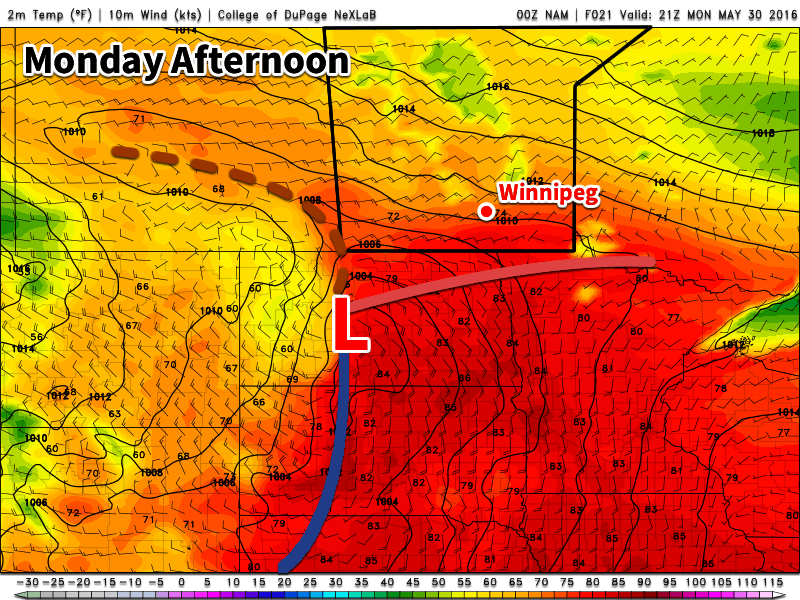
Tuesday will see rain ending in the morning, before drier conditions move in for midday. It appears possible that more showers and thunderstorms will develop in the afternoon, especially if there are some breaks in the cloud to allow for daytime heating. Additional rainfall will be sporadic with isolated patches of moderate amounts in showers and thunderstorms. Winds in the Red River Valley are expected to be southerly near 20 km/h.
A cold front will pass through southern Manitoba by Wednesday morning, allowing cooler air to filter down from the north. High temperatures will only be in the mid teens under mainly cloudy skies. Additional showers are likely through the day on Wednesday, but large accumulations are not expected. Winds will be gusty from the north-west at 30 km/h gusting to 50 km/h.
Long Range
It appears that we will return to a warmer pattern by the end of the week. However, models also hint at numerous chances for storms in an unsettled northwesterly flow 5-10 days from now. Temperatures will likely be near or slightly above seasonal during this time period, although some cool downs will likely be interspersed within the warmer periods.
